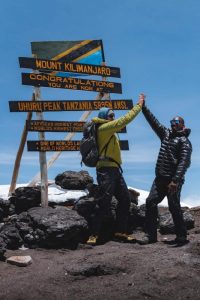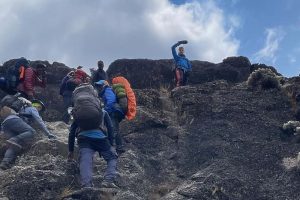The Duration of Kilimanjaro Climb: A Guide
Tackling the majestic Mount Kilimanjaro is a dream for many adventurous souls, but understanding the duration of the climb is crucial for a successful and enjoyable experience. The duration of a Kilimanjaro climb can vary depending on several factors, including the climbing season and individual factors that influence the climbing time.
Understanding Kilimanjaro Climbing Seasons
Mount Kilimanjaro, located in Tanzania, can be climbed year-round, but there are two main climbing seasons to consider: the dry season and the wet season. The dry season, which runs from late June to October and from December to February, is the most popular time to climb Kilimanjaro. During this time, the weather is more stable, with clearer skies and lower precipitation, making for a more enjoyable and safer climbing experience.
On the other hand, the wet season, which occurs from March to May and from November to early December, brings more rain and cloudy conditions to the mountain. Climbing during the wet season can be more challenging due to slippery trails, mud, and lower visibility. It is important to consider the climbing season when planning your Kilimanjaro climb, as it can influence the duration of the trek and the overall experience.
Factors Influencing Kilimanjaro Climbing Time
Several factors can influence the duration of a Kilimanjaro climb, including the route chosen, the climber’s fitness level, and the acclimatization process. The most popular routes on Kilimanjaro, such as the Machame and Marangu routes, typically take between five to seven days to complete. These routes allow for proper acclimatization and offer stunning views of the mountain.
The climber’s fitness level is also a significant factor in determining the duration of the climb. Being in good physical shape can help climbers tackle the challenging terrain and altitude of Kilimanjaro more effectively. It is essential to train and prepare for the climb by including cardio, strength, and endurance exercises in your fitness routine.
Acclimatization is crucial when climbing Kilimanjaro, as the high altitude can pose risks such as altitude sickness. Taking the time to acclimatize properly can help prevent altitude-related illnesses and ensure a safe and successful climb. Climbers should follow the recommended altitude acclimatization guidelines and listen to their guides to adjust the climbing pace accordingly.
In conclusion, the duration of a Kilimanjaro climb can vary depending on the climbing season and individual factors such as route choice, fitness level, and acclimatization. To have a memorable and safe climbing experience, it is essential to plan and prepare accordingly. Sunset Africa Safari offers guided Kilimanjaro climbs with experienced guides and support staff to help you reach the summit. For booking requests and more information, please contact info@sunsetafricasafari.com.



